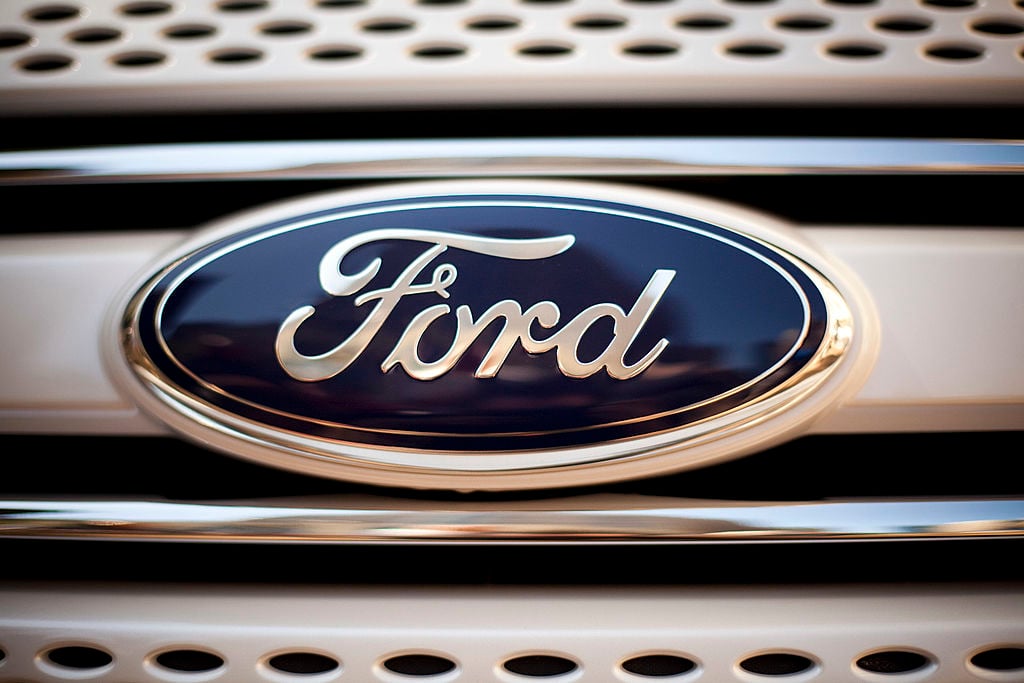
The Ford Atlas concept was said to be a preview of the all-new F-150, set to launch next year. The costs of launching new products like Ford's pickups will weigh on 2014 profits, the company said this week. Photo credit: Ford Motor Co.
Ford (F 0.32%) investors had a rough week.
Shares of the Blue Oval dropped over 6% on Wednesday -- the biggest one-day drop for Ford stock in two years -- and fell further on Thursday, after the company announced that next year's profits would likely fall short of Wall Street's expectations.
That seems like bad news. But is it time to sell your Ford stock?
It might be an opportunity to buy more. Here's why.
Launching a new vehicle is an expensive proposition
Ford CFO Bob Shanks said on Wednesday that the company's pre-tax profit would be about $8.5 billion in 2013, a roughly $500 million increase from last year. That was good news. But Shanks also said that profits next year would fall, likely to somewhere between $7 billion and $8 billion.
That wasn't good news. Investors want profit growth, not declines. That led quite a few to sell Ford stock right away.
But for those who are looking at Ford as a long-term investment, I'd argue that it wasn't bad news when you hear the details. Shanks explained that Ford is launching a lot of new models next year, 16 in North America alone, and costs related to those launches will be a big reason for the decline.

The 2015 Ford Mustang is one of a slew of new Fords that will arrive at dealers next year. Photo credit: Ford Motor Co.
That's more than three times the number of launches Ford will have done in North America in 2013. And it includes all the variations of Ford's biggest-selling and most important product, its F-Series pickup line.
New-product launches should lead to greater profits in the long run. Ford's new trucks should make more money for Ford than its current pickups. But in the near term, launching those new products is expensive. Really expensive: Just the tooling required to produce an all-new model can account for as much of a quarter of its total cost, $200 million or more.
Add in logistics costs, the massive cost of a big advertising push for something like an all-new family of pickups, and so forth, and you can see that a new-product launch can be very expensive.
Discounts on the old products also add up
Those aren't the only costs involved. While you're spending big to introduce the new product, you're making less money on the old ones. Inventories of the outgoing products are generally sold off at a discount. That hurts profit margins. When you're talking about Ford's most profitable and best-selling product, the F-Series trucks, those discounts will mean a big hit to the bottom line.
Just look at what rival General Motors (GM +0.41%) went through when it launched its all-new Chevy Silverado and GMC Sierra pickups this past year. Huge numbers of old trucks sold off at massive discounts, and a slow ramp-up of sales for the (better, more profitable) new trucks.

GM's launch of the new 2014 Chevrolet Silverado was a success, but it wasn't cheap. Photo credit: General Motors
The upshot: GM sold fewer trucks than it could have, and it sold many of those (the old ones) at steep discounts that got even steeper as the year went on. That added up to a big income hit for GM.
And here's the thing to remember: GM's launch went impressively well. If Ford does as well as GM did, it will be doing quite well.
These launches are key to Ford's long-term success
New products like the next F-Series are critical to sustaining Ford's momentum over the next several years. Their success is essential if Ford's stock is to realize the gains that investors are hoping to see.
Ford's remarkable renaissance, and the boom in the price of Ford stock, over the last few years has been driven, more than anything else, by its much-improved products. Cars like the Focus and Fusion are serious contenders with the best of the import brands, a first for Ford.
Think about Ford's recent streak of product successes. The Fusion and Escape last year, the Focus and Explorer before that, the Fiesta, all strong products that were big improvements on the vehicles they replaced -- and that have competed well with Toyota (TM +2.96%) and the other import brands.
Together, those products have done more than anything else to improve Ford's standing -- and to raise its profits (and the price of Ford stock). Next year brings the new trucks, along with an all-new Mustang, the new Lincoln MKC SUV, and other new vehicles that Ford has yet to announce.
It'll cost Ford big bucks to launch all of those new products. What Ford said this week is that those costs will add up in the near term. But they're a critical part of Ford's unfolding story.
Long-term investors in Ford stock -- full disclosure: I'm one of them -- need not be too concerned.
One last note
I'll end with a quick reminder.
Back in January, Ford reported those strong full-year earnings for 2012, along with a fourth-quarter result that beat Wall Street's estimates.
But Ford stock fell almost 5% on the news. Why?
It's because CFO Shanks said that Ford could lose as much as $2 billion in Europe in 2013. That was worse than some on Wall Street expected, and it led to a big sell-off, just as we saw this past week.
But here's how that played out: Ford's turnaround plan in Europe started to take hold over the course of 2013. Ford Europe will lose money for the year, but less than expected.
I said at the time that Ford was still a buy. That argument looks pretty good in retrospect. Even with this week's losses, Ford stock is up over 18% since I wrote that article.
I think all the reasons I gave in January for buying Ford remain true. It remains a great story, and it'll still take a few years to play out.
But next year could be a little bumpy. Use those bumps wisely.








